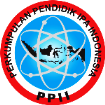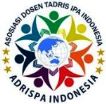Ethno-science Approach in Making Bamboo Lemang Materials: Implications of Understanding the Concept of Thermal Energy
Abstract
This study aims to analyze the influence of ethno-science approach through the making of bamboo lemang in improving students' understanding of the concept of thermal energy material at SMPN 17 South Bengkulu. This study uses a quantitative approach with a quasi-experiment method and a Non-Equivalent Control Group design. Creswell states that a pseudo-experiment is an experimental situation in which the researcher assigns, but not randomly, participants to a group because the researcher cannot artificially create a group for the experiment. Data were collected through concept comprehension tests and observations. The results of the study showed a significant improvement in the understanding of students who used the ethno-science approach compared to conventional methods. Based on the results of the normality test with Shapiro-Wilk, it showed a significance value of 0.129 (experimental class) and 0.067 (control class), which means that the data is normally distributed. Based on the results of the homogeneity test with Levene's Test resulting in a significance value of 0.611, indicating that the data variance between the experimental and control groups was homogeneous. Based on the results of the hypothesis test using Independent Samples t-Test, it showed a t-value (-5.42) with p = 0.000, which means that there was a significant difference between the two groups. The average understanding of students in the experimental class was 83.07, while in the control class it was 66.13.These results show that the ethno-science approach through the making of bamboo lemang contributes positively to improving the understanding of the concept of thermal energy.
Keywords: Ethno-science, Bamboo Lemang and Heat energy
Full Text:
PDFReferences
Ardana, H. P., Ilhami, A., Diniya, D., & Munawwarah, M. (2023). Identification of Ethnoscience in Malomang Local Wisdom as a Science Learning Resource. Journal of Chemistry Education and Integration, 2(1), 10. https://doi.org/10.24014/jcei.v2i1.21686
Chaer, P., Culture, B., As, L., & Character, I. P. (2021). Science Learning Based On Local Culture As A Form Of Introduction Science or science is one of the sciences that must be possessed by humans. Especially in this era of globalization, the development of science and technology is very rapid and advanced. II, 35–42.
Charoenphun, N., & Wangtueai, S. (2017). Development of Sticky Rice in Bamboo for Value-Added Local Agricultural Products in Sakaeo province Area. Journal of Food Technology, Siam University, 12(1), 48-58.
Commission, E. (2020). The Integration of Local Wisdom in Science Curriculum in Primary Schools: A Systematic Literature Review. 4(1), 1–23.
Dewi, S. Z., & Ibrahim, T. (2019). The Importance of Understanding Concepts to Overcome Misconceptions in Science Learning Materials in Elementary Schools. UNIGA Journal of Education, 13(1), 130–136. http://dx.doi.org/10.52434/jpu.v17i1.2 553
Diani, S. F., Maulidiya, D., & Susanta, A. (2020). The Ability of Junior High School Students to Understand Concepts After Obtaining Doscovery Learning. Journal of School Mathematics Learning Research, 3(3), 362–373.
Dihamri, Geography, P., University, F., & Bengkulu, S. H. (2021). Local Serawai Tribe In Kearifan Regency. 82–92.
Edward. (2020). The Function of Lemang in the Marriage Ceremony of the Besemah Tribe in Kaur Regency, Bengkulu Province. Journal of History and Cultural Research, 5(2), 235–256. https://doi.org/10.36424/jpsb.v5i2.141
Frayon, S., Swami, V., Wattelez, G., Nedjar-Guerre, A., & Galy, O. (2024). Associations between academic achievement and weight status in a multi-ethnic sample of New Caledonian adolescents. PloS One, 19(10), e0309782. https://doi.org/10.1371/journal.pone.0309782
Hasan, S.H. (2023). Ethnoscience: Learning Strategies Based on Culture and Local Wisdom. Also Read, 106–116.
Hearn, J. (2024). Evaluating the Concept Of Political Masculinity/Ies: A Simple Idea or A Case of Too Many Ideas? European Journal of Politics and Gender, 7(3), 326–344. https://doi.org/10.1332/25151088y2023d000000021
Iskandar, H., Sudarmin, Susilo, & Aji, M. P. (2022). How Research Trends On Ethnoscience In Science Learning? A Systematic and Scoping Review Of Empirical Studies. International Conference on Science, Education and Technology, 474–483. https://proceeding.unnes.ac.id/index.php/iset
Jufrida, J. (2020). 2020 Techno-Ethno.
Kelana, J. B., Wardani, D. S., & Wulandari, M. A. (2021). Ethnoscience as a Resource for Learning in Elementary Schools. JIKAP PGSD: Scientific Journal of Education, 5(1), 74. https://doi.org/10.26858/jkp.v5i1.16822
Mukti, H., Suastra, I. W., & Aryana, I. B. P. (2022). Integration of Ethnoscience in Science Learning. JPGI (Indonesian Teacher Research Journal), 7(2), 356–362.
Nurrubi, H. M., Nurfadilah, V. A., & Latip, A. (2022). Local Wisdom from an Ethnoscience Perspective and Its Relation to Science Learning. UNIGA Education Journal, 16(2), 623. https://doi.org/10.52434/jpu.v16i2.2022
Puspasari, A., Susilowati, I., Kurniawati, L., Utami, R. R., Gunawan, I., & Sayekti, I. C. (2020). Implementation of Ethnoscience in Science Learning at Elementary School of Muhammadiyah Alam Surya Mentari Surakarta. SEJ (Science Education Journal), 3(1), 25–31. https://doi.org/10.21070/sej.v3i1.2426
Putri, H., Susiani, D., Wandani, N. S., & Putri, F. A. (2022). Cognitive Learning Outcome Assessment Instrument on Description Tests and Objective Tests. Journal of Papeda: Journal of Basic Education Publications, 4(2), 139–148. https://doi.org/10.36232/jurnalpendidikandasar.v4i2.2649
Quraish. (2020). Shapiro Wilk Normality Test Test. 5–17.
Russian. (2023). Learning Models Develop Teacher Professionalism. PT. Raja Grafindo Persada, 02, 201.
Sari, A. P., Hasanah, S., & Nursalman, M. (2024). Test of Normality and Homogeneity in Statistical Analysis. 8(2012), 51329–51337.
Setyoko, B. (2022). Evaluate The Performance of The Heat Exchanger Using The Fouling Factor Method. 6667. http://jurnal.fkip.uns.ac.id/index.php/prosfis1/article/view/3316
Sholichah, E., Kumalasari, R., Afifah, N., Indrianti, N., Nurintan, F., & Rahayuningtyas, A. (2020). The Effect of Cooking Method and Preservative on Storage Time of Lemang (Rice Bamboo). 149–160.
Suaidin. (2022). Integration of Local Wisdom in Science Learning https://suaidinmath.wordpress.com/2014/07/14/tahapan-kegiatan-pengawasan/
Usmadi, U. (2020). Testing of the Requirements of Analysis (Homogeneity Test and Normality Test). Educational Innovation, 7(1), 50–62. https://doi.org/10.31869/ip.v7i1.2281
W.Creswell., J. (2018). Qualitative, Quantitative, and Mixed-Methods Research. Microbe Magazine, 4(11), 485–485. https://doi.org/10.1128/microbe.4.485.1
Watts, E. (2021). Literature Studies: Ethnoscience in Science Learning. Raden Intan State Islamic University Lampung, 1, 1–130. http://repository.radenintan.ac.id/id/eprint/13951
Yuliyanti. (2024). Ethnoscience Approach in IPAS Learning for Inclusive Science Literacy in Primary Schools: A Literature Review. 13(3), 2777–2788.
Zakirman, Z. (2020). Introduction to Social Statistics. STKIP PGRI West Sumatra Press.
Zuhdan, P. (2021). Science Learning Based on Local Wisdom. PROCEEDINGS : National Seminar on Physics and Physics Education, 2(1), 246–256. http://jurnal.fkip.uns.ac.id/index.php/prosfis1/article/view/3316
DOI: http://dx.doi.org/10.24014/jnsi.v8i1.35997
Refbacks
- There are currently no refbacks.

Journal of Natural Science and Integration
E-ISSN: 2620-5092 P-ISSN: 2620-4967
Published By:
Department of Science Education, Faculty of Education and Teacher Training,
State Islamic University of Sultan Syarif Kasim Riau, Indonesia
Mailing Address:
Jl. H.R Soebrantas Km. 15 No. 155
Kelurahan Simpang Baru
Kecamatan Tuah Madani, Pekanbaru, Riau, Indonesia
Email: jnsi.tadrisipa@uin-suska.ac.id
Indexed By:
Journal of Natural Science and Integration is licensed under a Creative Commons Attribution 4.0 International License.


_-_Copyy2.png)






.jpg)
.png)
.jpg)
.jpg)




